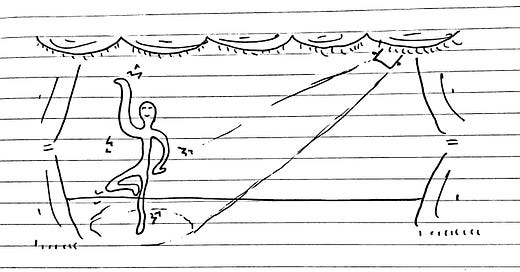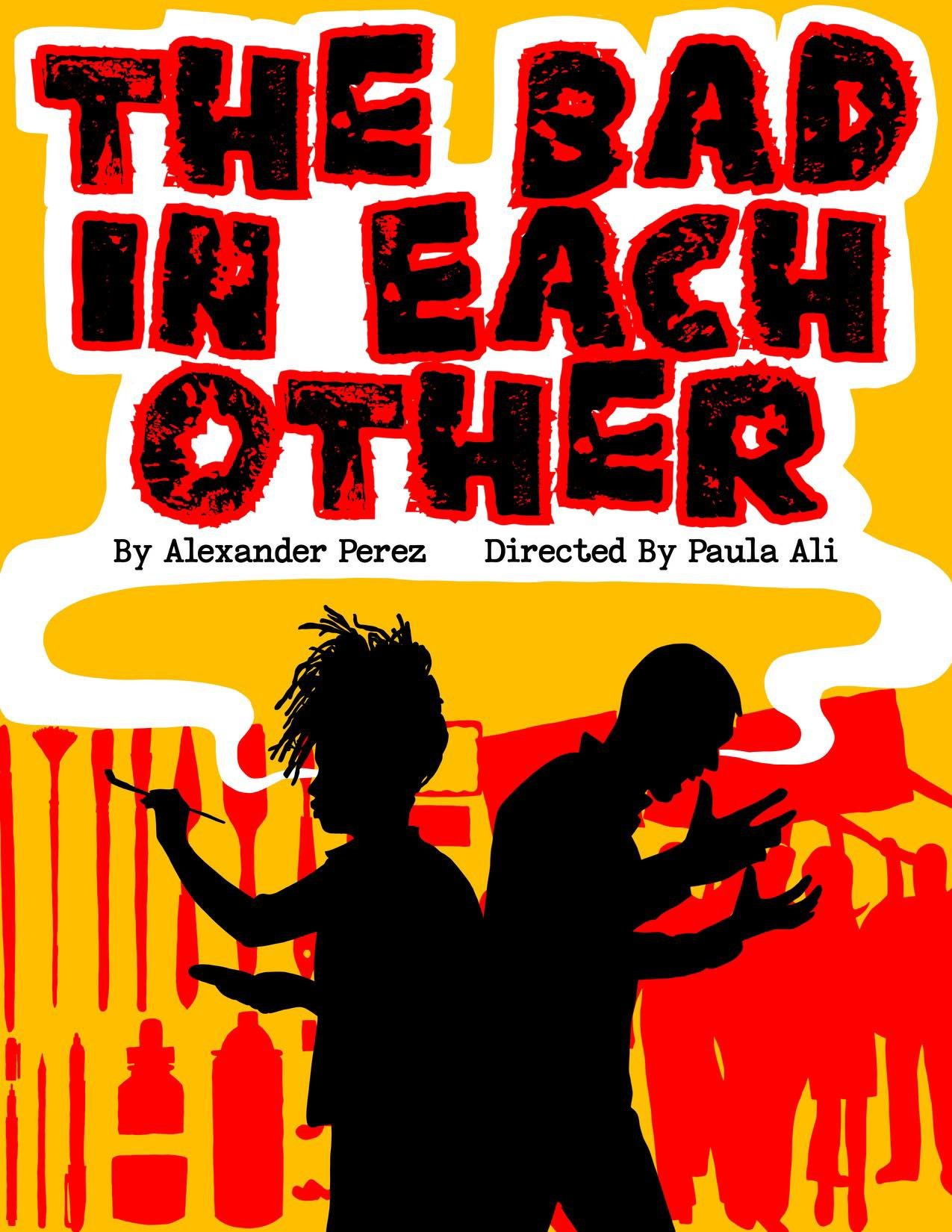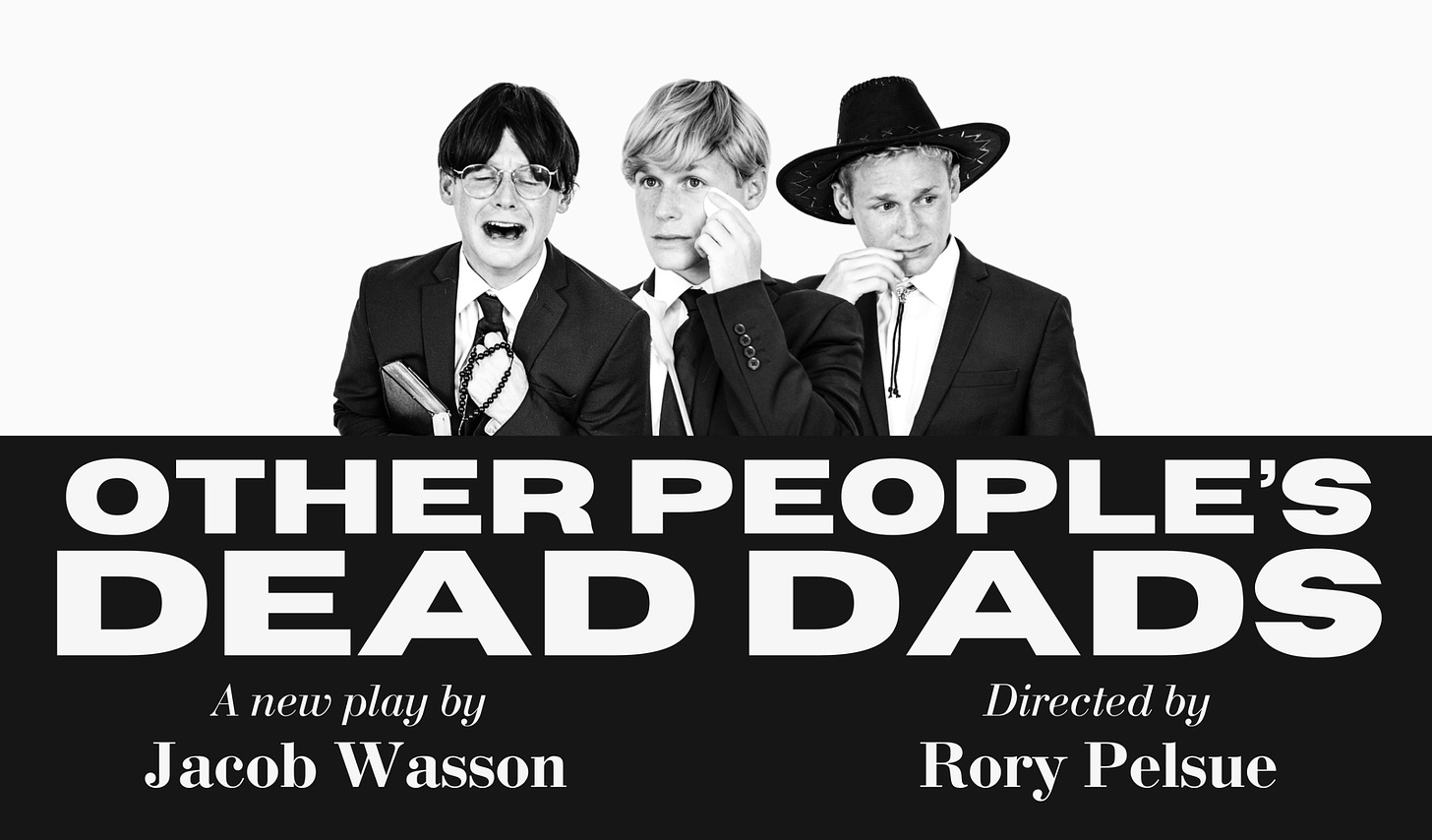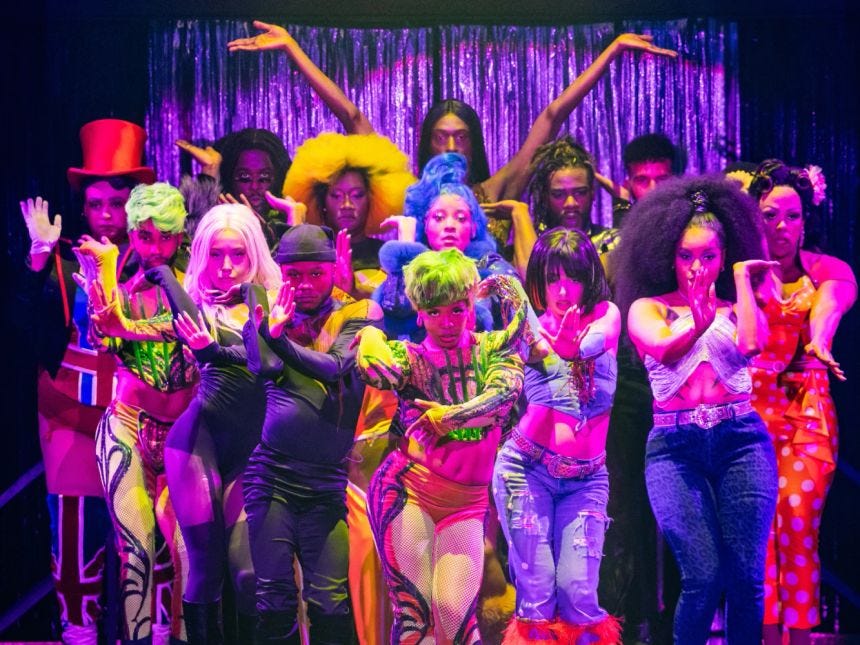Welcome to Art and Survival, a weekly-ish newsletter documenting one theatre-loving boy’s attempt to build a secure life filled with creative acts. You can find out more in the introductory post here.
This week(end): reflections/light criticism around three acts of theatre I saw in NYC last week.
A healthy arts ecosystem demands coverage of the arts. For international artists to secure visas, they need press. For any artist to secure funding, they need press. For people to go out and see art and support the ecosystem, they need to know what art is happening.
In the spirit of generating more coverage of art, I’m dedicating this weekend edition of Art and Survival to three plays I saw last week. If you’ve seen any of these, or any others, and want to discuss them, please start or continue the conversation in the comments.
Without further ado…
1. THE BAD IN EACH OTHER
In moments in the history of humankind that demand activism in response to injustice, virtue signaling abounds – especially in an age where everyone can almost access a brief moment of fame because of hyperconnection.
Virtue signaling is at the heart of Alexander Perez’s play The Bad in Each Other, which just closed a limited engagement in the Tank’s 50ish-seat theater on 36th St & 8th Ave in NYC. The play was written in 2020, and has been in development since. This production at the Tank is, to my knowledge, the most realized version of the story to-date.
The play tells the story of Karma (played by Cherrye J. Davis), a Black femme visual artist badass, and Felix (played by Justy Kosek), a white soyboy with a trust fund. Felix is out trying to get a good Instagram story at a protest, and falls into Karma’s arms after being pepper-sprayed by cops. Karma is ever-prepared for the protest, providing Felix with milk for his burning eyes, and an apple for his empty stomach. The two get familiar – and then intimate – quickly, and as the play progress, their relationship unfolds. We watch the two evolve (or devolve): Karma steps into renown within the art world and leaves resistance graffiti behind. Felix works a desk job before diving back into the activism scene, fighting against Mayor Fringus’ plan to construct a new slaughterhouse and later to build a “geriatric incinerator.” The movement of the plot is summed up by an art installation that’s the backbone of the set. As rubbish is cleared away, the words on the installation are revealed: “BUY-IN; BREAK-OUT; ENVY; SELL-OUT.”
Natasha Rotondaro’s lighting design here is stunning – complimentary colors paint the actors’ faces and perfectly place them in time. Paula Ali’s direction makes great use of the three-quarter round space, moving the actors along diagonals that bring each moment into sharp focus. The set is modular, and though some transitions overstay their welcome, the movement contributes to a changing architecture that supports the years-long scale of the intimate story.
The text itself is ornate as hell, and moves at a clip. Perez’s playfulness is a light: Felix’s great-grandfather is the guy who “invented fees”; at a local fair, french fries are named “Fringus fries,” after the local mayor; Karma and Felix’s quippy jokes instantly turn to serious stabs. If anything, the text is overstuffed, at times moving too far into philosophy and away from the action at hand. The play itself is just a little too long, but the time spent with the characters is still thought-provoking and intellectually stimulating.
Cherrye and Justy do a sickening job as Karma and Felix, respectively. Justy has a gorgeous glow about him, and a pleasant voice that reminded me of a soyboy who sort of forced me into friendship in college. Cherrye’s rendering of Karma is full of care – she really transforms physically over the course of the play, straightening in her spine as Karma gains acclaim.
This is a good production of a new play, and with a few cuts to keep action rolling, The Bad in Each Other could be a welcome meditation on the posturing that’s an inevitable part of hyperconnected activism.
2. OTHER PEOPLE’S DEAD DADS
I have always felt close to death. Growing up, my Mom honored a child she lost in a yearly ceremony where grieving mothers released butterflies. When my friends have lost friends, or family, I feel the loss, though I’m removed, and do what I can to support them. After watching Jacob Wasson’s new play, Other People’s Dead Dads, I’m questioning the connections between grief and gay identity in a way I’ve never done before.
Deftly directed by Rory Pelsue at Dixon Place, this production – a followup to an industry reading of the play in 2022 – is tight, hilarious, touching, and exhilarating.
The play follows Ollie (Cole Doman), a gay 26-year-old living in New York City who earns a living as a for-hire mourner. His specialty is families with gay children who’ve run away. At a patriarch’s funeral, for instance, Ollie dresses up to play the part of a gay son who’s “returned after so long.”
There’s a sexy three-act structure at work here: in the first act, we drop into a funeral with Ollie, get to know his hustle, and meet the first phantasms of gay martyrs – in this case, Marie Antoinette (Jess Darrow) – who will be with us, and Ollie, throughout the evening. After this first funeral, we follow Ollie to a meet-cute with an awkward and deeply sweet guy in his building who becomes his boyfriend (Jesse, played by Julian Sanchez). In the second act, Ollie is challenged by a religious fanatic mother who wants him to play the part of her runaway son who comes home and repents for his sins of sodomy at her funeral – to the tune of $700k. Things get complicated. In the third act, Ollie’s own father dies, and we finally follow him to a funeral where he belongs. Unfortunately, his wounds are not healed there: they fester, and pop, and some of the phantoms that haunt him are released (in an electrifying dream sequence). The ensemble of martyrs – Antoinette, Joan of Arc (Zoe Mann), Grand Duchess Anastasia Nikolaevna (Jessica Litwak), and later, Oscar Wilde (Patric Madden) – punctuate the action, reflecting on questions like: why are they summoned by gays? Is this a good thing? Why is it that women are martyrs to white gay men who themselves can nearly access perfect privilege?
Cole Doman as Ollie is easy to watch and makes a great guide for the story. Julian Sanchez’s sweet, clumsy, carpet-tripper boyfriend is perfectly awkward. Jessica Litwak gives a virtuosic performance as first an end-days Christian, then a princess, then a loving and heartbroken mother who feels she failed her runaway gay son.
There’s a fire moment that opens the second act: a speech given by Marie Antoinette that’s sharply self-aware and full of thesaurus-speak – it almost feels like Shakespeare, but then becomes anachronistic and reflective of contemporary queer slang. The speech is fiercely delivered by Jess Darrow.
Nicole E. Lang’s lighting design is funeral-stark, then bloody-red and dark; and Josh Barilla’s scenic design – mostly the clever use of a casket variously as a bathtub, an actual casket, and a gathering place for the ghostly martyrs – is everything the play needs it to be, sparse and clear. The greater scope of the play’s world is realized by Cole McCarthy’s brilliant costumes – a period bodice for Marie; a breastplate for Joan; a 3-piece suit for a pastor’s son. It’s all remarkably well put-together, which is a testament to the producing team.
Growing up queer and in a family can be an isolating experience. Sometimes it’s better; sometimes worse. Sometimes growing up in a family makes queer boys run away – only to find that the world they’ve run to is empty, disconnected from any sense of real rootedness and meaning. This is not always what happens, but in Jacob Wasson’s play, we watch this happen. We watch one queer boy confront his made up world of nothing in realtime, and that’s a remarkable something.
I’ve seen one other play by Jacob – Smuta, at Gymnopedie in Bushwick last summer – and after seeing that and Dead Dads, I’m convinced that he’s a writer to watch. His personal stories have a specific surreality that strike a universal chord.
3. Cats: The Jellicle Ball
This production of Andrew Lloyd' Webber’s Cats at the new horrifically architected Perelman Arts Center in downtown NYC has been extensively covered elsewhere, including in this piece by Helen Shaw, a critic who I deeply admire for her descriptive, thoughtful reflections on what it’s like to sit in a room with a play (or musical). So, I don’t feel the need to cover Cats extensively. If you’re curious what the show’s like, check out Shaw’s piece.
What I will say is that I did not expect to walk out of a production of this musical in 2024 thinking “Cats is a fantastic show,” but here we are, and this is what I think. A week later, I’m still stuck listening to a couple tracks from the original 80s album because of this production. Unlike the recent-ish film of Cats, this production is faithful to a score that works. It’s got bombastic choreography, and invites its audience to participate and engage with the ballroom stage action in a way that’s just utterly electric, and unlike anything else out there. If you’re craving a good musical and some pure MT joy, made for this moment, this show is the one to see.
That’s what I’ve got for this week! Thanks for reading.







